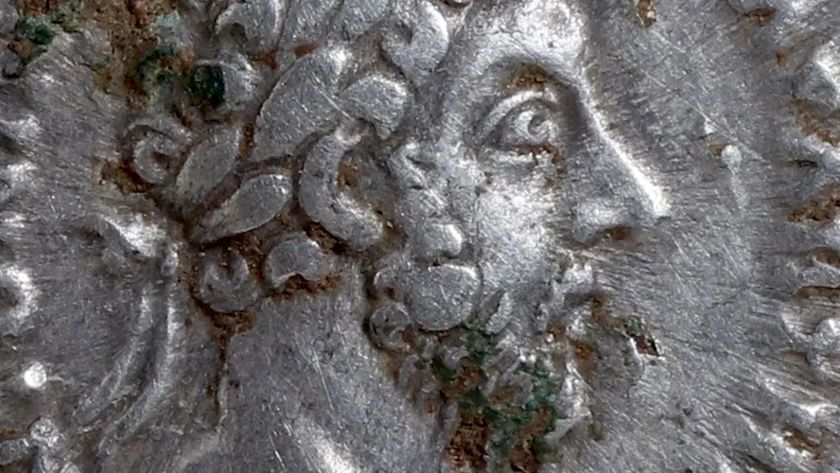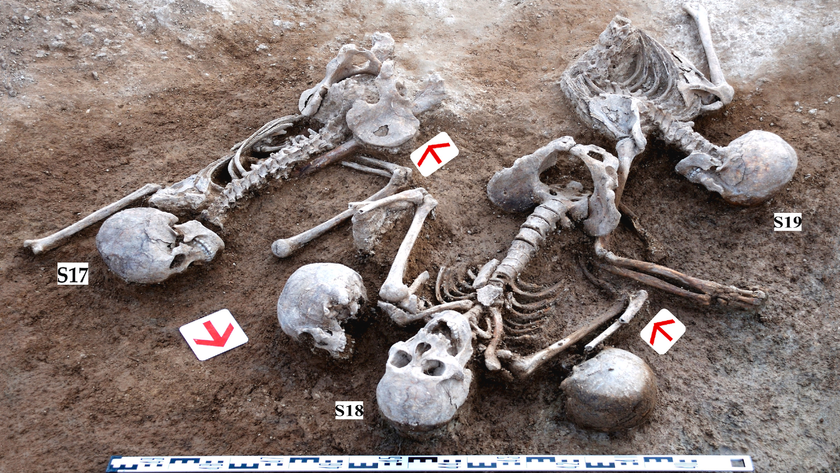
The majestic aqueduct that fed water to ancient Rome carried less of the life-giving liquid than previously thought, new research suggests.
The Anio Novus aqueduct carried water from the mountains into Rome at a rate of about 370 gallons of water per second, said lead author Bruce Fouke, a geologist and microbiologist at the University of Illinois at Urbana-Champaign.
"That's enough water, per second, to take a three-hour shower or to take seven baths," Fouke said in a statement.
While that may sound like a lot, previous analyses had given a higher water flow, the researchers said. [Photos: Amazing Ruins of the Ancient World]
Ancient aqueducts
The Anio Novus aqueduct drew from the Aniene River, high in the Appennine Mountains. The ancient aqueduct snaked 87 miles (54 kilometers) down the hillsides into the heart of Rome. It was built over 14 years beginning in A.D. 38. This impressive engineering feat was one of the main reasons the Roman population could grow from 600,000 to 1 million during the first century A.D., Fouke said.
However, until recently people weren't sure exactly how much water the aqueduct carried. Water commissioner Sextus Julius Frontinus calculated the flow rate in A.D. 97 in his treatise "De Aquis." But his estimates aren't reliable because he had no way of measuring water volume and speed, the researchers said. In addition, some of his numbers didn't add up, which he blamed on measurement error and water fraud.
Sign up for the Live Science daily newsletter now
Get the world’s most fascinating discoveries delivered straight to your inbox.
Other researchers tried to estimate water volume from average water speeds. But because the slope varied and the water didn't just travel in one straight path down from the mountains, its speed could change by as much as 3.3 feet per second (1 meter/second) in some places. That, in turn, changed how much water would have been delivered at the source.
To get around this, Fouke and his colleagues studied the limestone that had caked onto the aqueduct at the Roma Vecchia in Rome. The limestone, called travertine, was dissolved in the water and gradually settled out onto the infrastructure. The thickness and shape of the deposit can reveal the average water level. The travertine at Roma Vecchia suggested the aqueduct was nearly always filled to the brim.
But the travertine also reduced the effective volume of the aqueduct, leading to about 25 percent less flow than had previously been calculated, the researchers found in a study that was published online in the Journal of Archaeological Science.
Still, the number is impressive. The water supply would have supported antiquity's most populous city.
"Regardless of the different estimates, researchers agree that these aqueducts were the core piece of infrastructure that permitted the large-scale urbanization," Fouke said.
And in the modern world, that's a lot of water. The average American household guzzles about 400 gallons of water a day, according to the Environmental Protection Agency, so the Anio Novus aqueduct would have supported nearly 80,000 families.
Follow Tia Ghose on Twitterand Google+. Follow Live Science @livescience, Facebook & Google+. Original article on Live Science.

Tia is the managing editor and was previously a senior writer for Live Science. Her work has appeared in Scientific American, Wired.com and other outlets. She holds a master's degree in bioengineering from the University of Washington, a graduate certificate in science writing from UC Santa Cruz and a bachelor's degree in mechanical engineering from the University of Texas at Austin. Tia was part of a team at the Milwaukee Journal Sentinel that published the Empty Cradles series on preterm births, which won multiple awards, including the 2012 Casey Medal for Meritorious Journalism.











